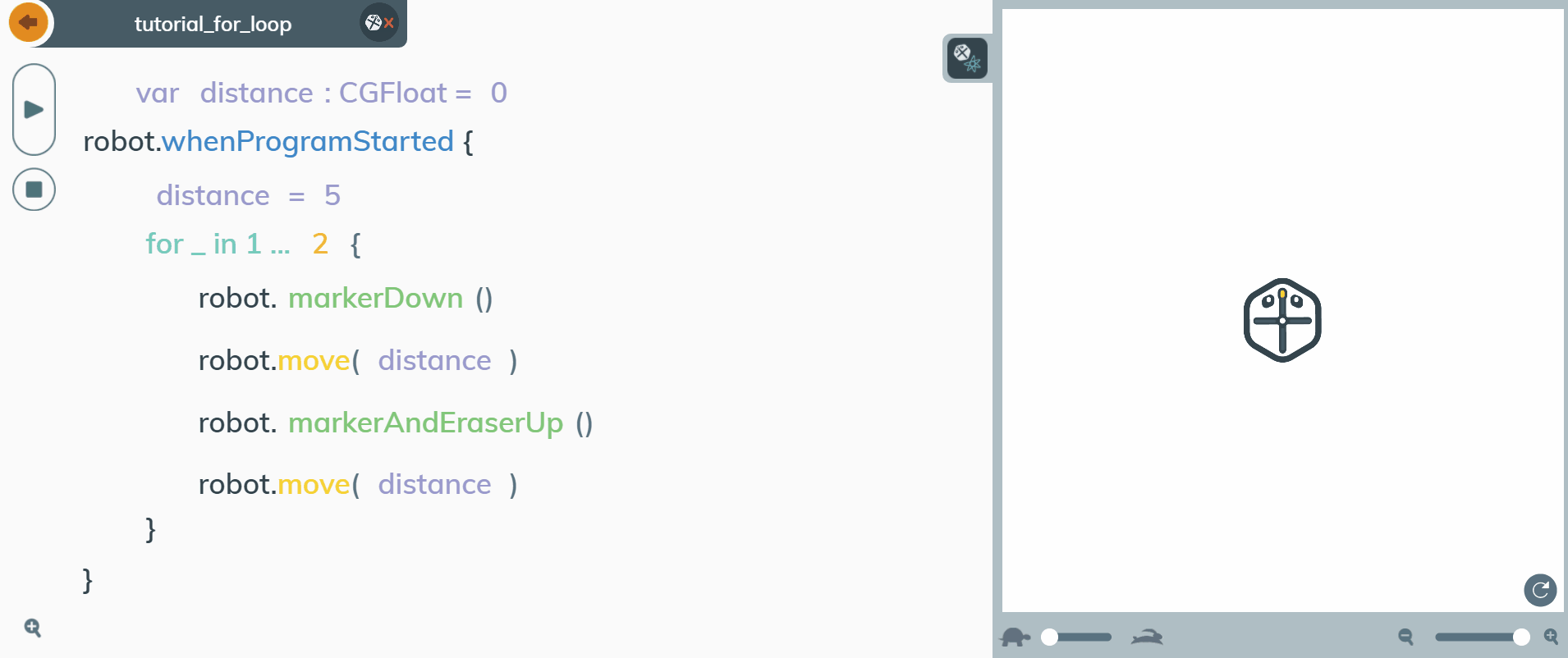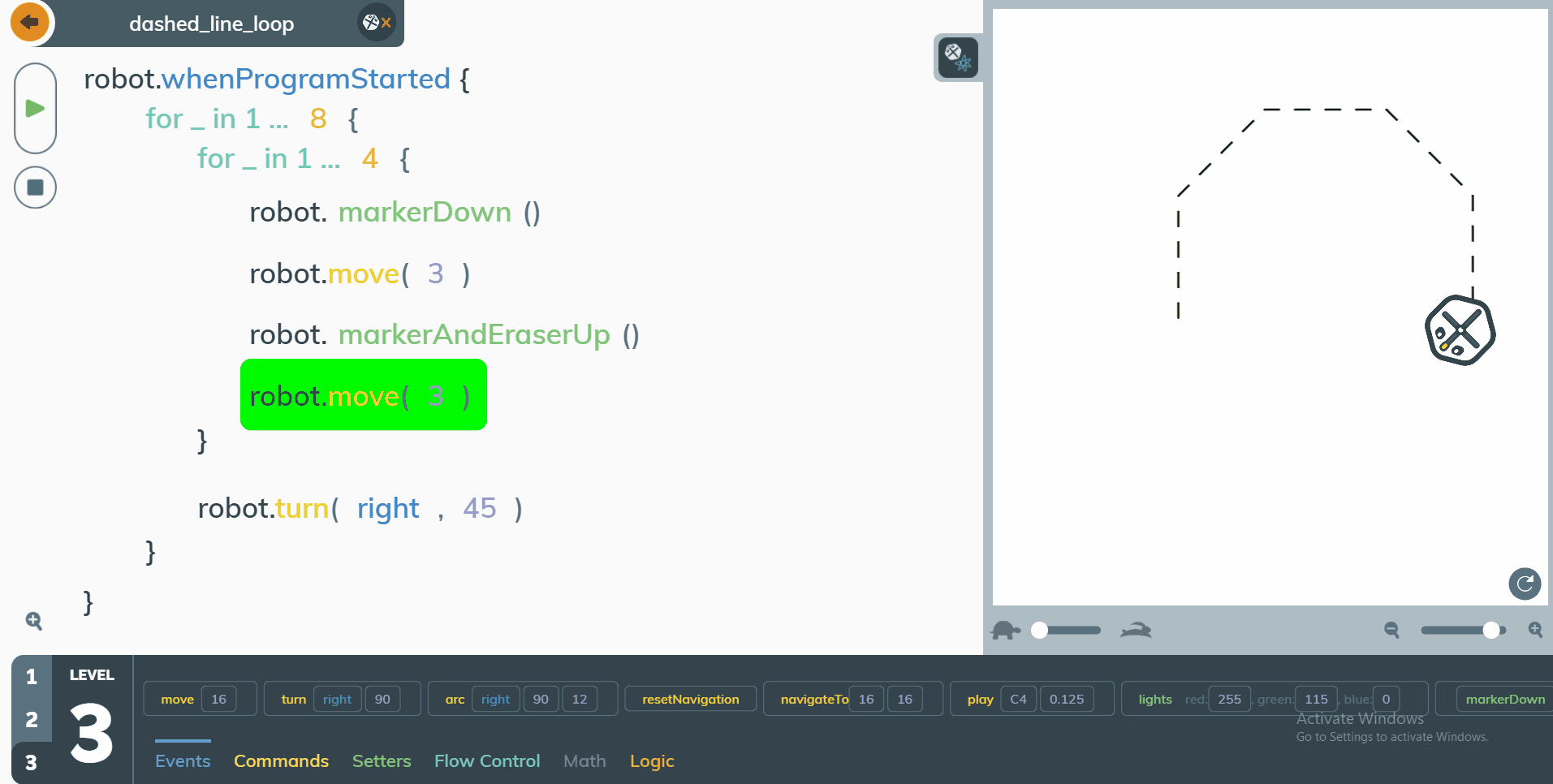P1 Exercise 5 - Loops¶
Loops are yet another technique to automate repetitive behaviours, thus making you code and development time shorter. There are different types of loops, and here we’re going to introduce for-loops, while-loops and nested loops.
For-Loops¶
For-loops are used when something has to be repeated for a fixed number of periods. Figure 5.1 shows a use-case of a for-loop, where the task is to draw a limited number of dashes. Each cycle of the for-loop draws one dash but the loop is repeated for 5 times, resulting in this neat little dashed line.
While-Loops¶
While-loops are useful if the robot must do something while a specific condition is true. For example have a look at
figure 5.2. When the program is started, a couple of variables are initialized, most importantly a variable
called move_robot. Then the program enters the while-loop and stays in there while the move_robot is equal to true.
The robot would be in this loop forever unless something changed the move_robot variable to false, which is done
in the robot.whenTouched event (see the events exercise).
Nested Loops¶
Nested loop is when you have one loop inside another. This is useful for programming behaviours like “For every floor in this building, clean up every room on each floor”. An example of a nested loop can be seen on figure 5.3, where the robot draws a dashed octagon.


